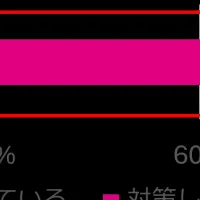
Chinese Orthodontic Expertise Highlights Key Trends in JAO DGAO 2024 Coverage
The Significance of the Chinese Approach in Orthodontics: Highlights from JAO DGAO 2024
The Journal of Aligner Orthodontics (JAO) has recently published a noteworthy summary of key presentations from the 8th Congress of the German Association of Orthodontics (DGAO) held in Cologne in November 2024. Among the distinguished speakers was Professor Gang Shen, the Director of Research and Development at Smartee Denti-Technology and Executive Chairman of the Taikang Bybo Dental Group. His innovative methods addressing skeletal Class II malocclusions have garnered widespread attention for their effectiveness and non-surgical nature.
Professor Shen introduced a groundbreaking diagnostic concept known as "malocclusion at three levels." This comprises several characteristics: mandibular retrusion, pronounced facial convexity, excessive incisal overjet, deep bite, significant Spee curve, and a Class II molar relationship. The highlights of the JAO report emphasized the particularly challenging nature of treating these conditions in adult patients. Although orthognathic surgery is often recommended clinically, many patients tend to decline this option. Traditional treatments, such as maxillary distalization or premolar extractions, often yield limited results in these cases.
To overcome these challenges, Professor Shen proposed an innovative orthopedic approach utilizing Smartee's S8-SGTB transparent aligner system. The therapeutic protocol involves two primary phases:
1. Mandibular Repositioning: This phase utilizes vertical occlusal blocks combined with an anterior-guided mandibular advancement through the S8-SGTB device.
2. Occlusal Optimization: After repositioning the mandible, aligners are employed to facilitate the intrusion of incisors and extrusion of molars, aimed at optimizing occlusal relationships. The advancement of the mandible also encourages adaptive bony remodeling in the posterior condyle region. Notably, the vertical movements of the teeth are controlled by the aligner system itself and do not directly stem from mandibular advancement.
In the JAO article, it was emphasized that remodeling of the temporomandibular joint (TMJ) remains biologically feasible even in adults, rendering effective repositioning possible beyond adolescence. Furthermore, Professor Shen presented a four-step simulation protocol to determine and document the optimal advanced mandibular position:
1. Intraoral Scan: Capture the anatomical structures of the patient’s dentition.
2. Repositioning Simulation: Define the new mandibular position.
3. Wax Registration: Secure this position.
4. Posteri Occlusal Scan: Digitally capture the final mandibular posture.
It is important to note that the occlusal construction must maintain a posterior space of 5 mm.
The success of the Smartee GS system, evidenced by over 100,000 clinical applications to date, further affirms its scalability, precision, and non-invasive treatment potential. Institutions interested in exploring Smartee's mandible repositioning technology or reviewing clinical case examples can visit www.smarteealigners.com.
Overall, the presentation by Professor Shen encapsulated a pivotal moment in orthodontic practice, especially for adults seeking alternatives to traditional surgical interventions. The approaches outlined at DGAO 2024 reflect a growing trend toward integrating advanced technologies with patient-friendly treatment options, marking significant advancements in orthodontic care.
Topics Health)










【About Using Articles】
You can freely use the title and article content by linking to the page where the article is posted.
※ Images cannot be used.
【About Links】
Links are free to use.